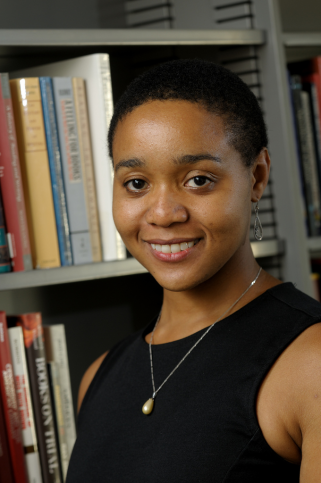
The following transcript is the exact text from an email interview with Professor Emily Knox at the University of Illinois at Urbana-Champaign. Her knowledge and insights on censorship contribute to our editorial on the censorship of Michelangelo’s The Last Judgment.
Emily Knox, an assistant professor at the University of Illinois at Urbana-Champaign, received her Ph.D. from Rutgers University’s School of Communication & Information. Her research has focused on intellectual freedom and censorship as well as information ethics. She was named a WISE Instructor of the Year by the wiseeducation.org. Professor Knox is also on the board of the National Coalition Against Censorship. More recently, in 2015, she published a book entitled, Book Banning in 21st-Century America.
– Steven Aceto & Jacob Lattie
Steven Aceto & Jacob Lattie: Are there unique stakes of censoring art objects, such as Michelangelo’s The Last Judgment, in particular?
Emily Knox: Censoring visual art involves particularly high states because art is often intended to evoke emotions. What is the point of art that doesn’t make us think? As with all types of censorship, silencing artists will inevitably lead to self-censorship and they may hesitate before creating a particular work. This is completely antithetical to the creative impulse.
Censorship tends to track with whatever is causing concern in a particular society. For example, in 21st -century America, books on diversity are often targeted for challenges. This is not surprising as the so-called browning of America changes our demographics. Censoring allows people to both work out these anxieties and also work to protect the morals and values that they believe are important in their own communities. I believe that this is essentially what happened with Michelangelo’s picture. Fear of the body (and following from that, sex) has long been a source of anxiety in the West. The idea that paintings of nudes need to be covered is a direct outcome of this. Such fear continues today if one considers how former U.S Attorney General John Ashcroft covered the nude breasts of the Spirit of Justice statue in 2002. Such censorship practices say much more about the person doing the censoring rather than the actual work of art. By asking for nudes to be covered by fig leaves or curtains, it is the censor’s own personal anxieties and predilections that are on display.
SA & JL: Why are questions about intellectual freedom and censorship important to ask today?
EK: People will always try to censor as there will always be some sort of media that makes people uncomfortable. The important question is how to respond to censorship. What should we do when someone asks to remove a piece of art from a public space? Or asks to remove a book from the library? The answer will differ depending on the context but it’s important not to be caught off guard by such requests. Institutions should have policies in place that provide well-thought out procedures in order to respond to such requests in a fair and equitable manner.
